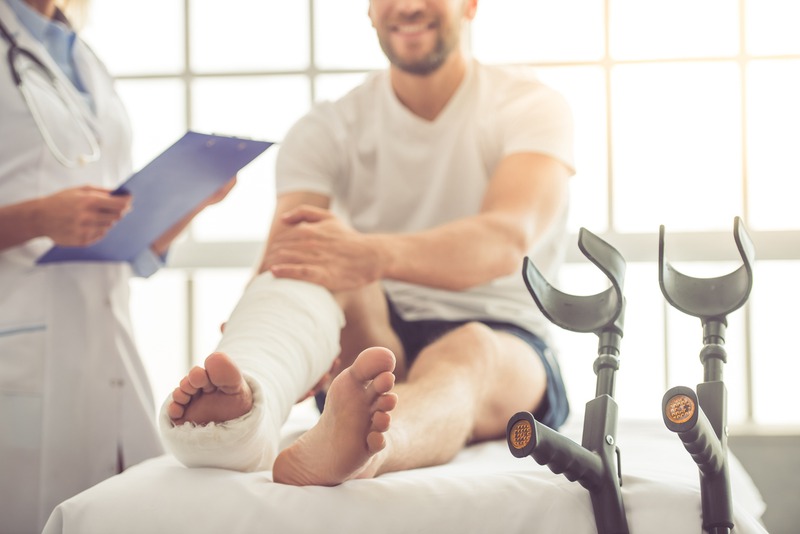Imagine for a moment that you’ve just come through the doors of an operating room after an orthopedic surgery. Your journey to recovery is about to begin, and no matter how skilled your surgeons are, the work is still ongoing. Enter the realm of physical therapy – a critical component of your rehabilitation. If you’ve ever wondered why physical therapy plays such a pivotal role in the healing process after orthopedic surgery, you’re in for an insightful ride.
Our bodies are like intricate machines that need the right maintenance to function optimally, especially after a surgical procedure. Physical therapy is maintenance – the bridge between surgical treatment and full recovery. So, let’s unpack this crucial postoperative puzzle piece together.
The Significance of Physical Therapy in Post-Surgical Recovery
Physical therapy is the yin to the surgical yang. It’s the process that maximizes the benefits of a surgical intervention. After an orthopedic procedure, our bodies tend to go into a sort of shock. Muscles weaken, joints stiffen, and our overall mobility takes a hit. Just like you wouldn’t expect a car to run perfectly after years in a garage without a little tune-up, our bodies need physical therapy to get back to the pre-surgery or, perhaps, an even better state.
Managing Pain and Discomfort
First things first, let’s talk about pain. Nobody likes it, but it’s an inevitable part of the healing process. Physical therapy steps in as a non-pharmacological warrior fighting this pain. Through various techniques like manual therapy, ice and heat application, and therapeutic exercises, physical therapists help alleviate the discomfort and, in many cases, reduce the need for pain medication.
Promoting Healing and Regaining Function
Healing isn’t just about closing up incisions; it’s about the body restoring itself to full functionality. This means retraining muscles, relearning movements, and ensuring that every part of the musculoskeletal system is playing nice with each other. Exercises prescribed by a physical therapist will target specific areas to help improve strength, flexibility, and range of motion, all of which are vital for recovery.
Preventing Complications
Surgery can sometimes lead to complications like blood clots or scar tissue formation. Physical therapy gets you moving safely, improves circulation, and prevents these potential hiccups on the road to recovery.
Customized Recovery Plans
One size doesn’t fit all when it comes to healing. Two different people with the very same surgery can have entirely different recovery experiences. That’s where the magic of physical therapy really shines. Physical therapists craft personalized recovery plans based on your unique circumstances, progress, and goals. This tailoring ensures that you’re not just healing, but you’re healing right.
The Journey of Healing and Strengthening
Now that we’ve established why physical therapy is so integral after surgery let’s talk about the journey it entails. This isn’t a sprint; it’s a marathon, with each step carefully planned to take you closer to the finish line of full recovery.
Early Postoperative Phase
In the days immediately following surgery, physical therapy starts gently. It might be as simple as getting you to move from the bed to a chair or teaching you to walk with the support of a walker or crutches. The focus is on preventing stiffness, reducing swelling, and starting the process of regaining basic movement.
Intermediate Recovery Phase
As you progress, the intensity of the physical therapy will increase. You’ll start performing more targeted exercises that challenge your muscles and joints just enough to encourage healing without overdoing it. It’s a balancing act that physical therapists are expertly trained to manage.
Advanced Rehabilitation Phase
When you’re deeper into the healing process, it’s time to turn up the heat. This phase will involve more complex and demanding exercises tailored to get you back to your daily activities and, if applicable, sports or hobbies. This is where you’ll see significant improvements in strength, stability, and endurance.
Connecting With the Right Professional
Finding the right professional after surgery can make a world of difference. Orthopedic surgeons are the architects of your surgical repair; they’ve done their part, and now it’s about building on that foundation.
Seeking out a skilled physical therapist is imperative. Someone who not only understands the surgical procedure you’ve undergone but also has a track record of success with similar cases will offer the most effective guidance and treatment. Their expert hands will chart the course of your post-surgical journey with the expertise that breeds confidence and fuels your recovery.
When Specialized Care Is Needed
Specialized care is sometimes essential. For instance, if you went under the knife to address hip pain, you’ll require a physical therapist who is well-versed in lower-body rehabilitation. A professional, also known as an orthopedist for hip pain, will be able to design a recovery program that factors in all the complexities of your hip surgery.
The expertise of these specialists is paramount in ensuring that you don’t just recover but do so with the full function of your hip, enabling a return to normal life and activities without persistent pain or limitations.
Laying Down the Path to Recovery
Physical therapy after orthopedic surgery is not just recommended; it’s essential. It’s the bridge from the operating room back to real life. It’s the craft of restoring movement, the art of alleviating pain, the science of preventing complications, and the personalized journey back to strength and function.
Throughout the healing process, your commitment, coupled with the expertise of physical therapists and surgeons, lays down the path to your recovery. Here are the key takeaways on why physical therapy is indispensable:
-
Pain Management: Helps manage post-surgical pain and reduce reliance on medications.
-
Healing and Function: Essential for regaining strength, flexibility, and mobility.
-
Complication Prevention: Get moving to prevent blood clots and excessive scar tissue.
-
Customization: Tailored recovery plans ensure that your specific needs are met.
Final Thoughts
As we conclude our chat, remember that healing is a team effort. After orthopedic surgery, your journey to getting better includes physical therapy, which is a key ally. It’s a support system aimed not just at healing but at enabling you to flourish again. Physical therapy is an essential step, offering deep benefits and tailored treatments to get you back to your favorite activities. Approach this path with trust as you’re guided by experts committed to your full recovery. We’re united in this goal—your complete well-being.





